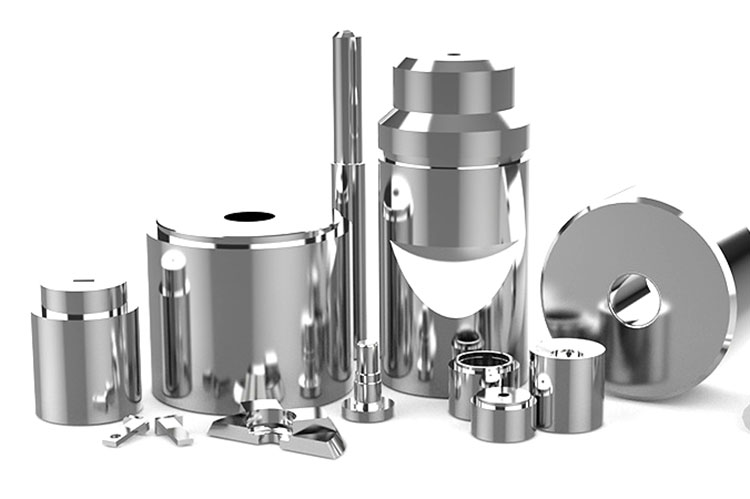Tungsten Carbide Dies vs Steel Dies
Which one is better between tungsten carbide dies and steel dies? These two are often used in rifle dies, stamping dies, drawing dies, as well as punching or extrusion dies.This […]
Which one is better between tungsten carbide dies and steel dies? These two are often used in rifle dies, stamping dies, drawing dies, as well as punching or extrusion dies.This depends on several factors, such as costs, ease of machining, wear resistance, durability, and tolerance to high temperatures and corrosion.
Understanding Dies and Molds
Normally, “dies” are referred to as stamping forms used for stamping or metal forming, achieved through processes such as pressing, punching, or extrusion. “Molds”, on the other hand, refer to plastic forming and others. Both tungsten carbide dies and steel dies are used for metal processing.
Our factory business: We design, develop and produce powder metallurgy moulds, carbide parts, powder injection moulds, stamping toolings and precision mould parts. Whatsapp:+8618638951317. Email: [email protected],
Material Comparison
Material Features
Die steel and tungsten carbide are common mold materials that have wide applications in the mold manufacturing field. So, which one is better between die steel and tungsten carbide material? Let’s compare them in terms of material features, mechanical properties, wear resistance, machinability, and cost.

Die Steel
Die steel is a type of steel that has superior mechanical properties and wear resistance.
- High Hardness and Strength: Die steel has high hardness, strength, and toughness that can meet the high-strength and wear-resistant requirements during the mold’s operation.
- Heat Treatment: It has good heat treatment properties to improve hardness and wear resistance.
- Excellent Machinability: Allows for easy cutting and molding.
Tungsten Carbide die
Tungsten carbide is a high hardness, high strength alloy material mainly composed of tungsten and other alloy elements.
- Extreme Hardness: It has extremely high hardness and wear resistance suitable for mold operations.
- High-Temperature Resistance: Maintains good hardness and strength under high-temperature conditions.
- Corrosion Resistance: Capable of resisting corrosive environments.

Mechanical Properties
In terms of mechanical properties, both die steel and tungsten carbide possess high hardness and strength, meeting high-strength demands during mold operations. However, tungsten carbide’s hardness and strength are higher, making it more suitable for applications requiring these characteristics.
Wear Resistance
Both die steel and tungsten carbide have outstanding wear-resistant properties. However, tungsten carbide’s wear resistance is superior compared to die steel, making it more appropriate for high wear resistance applications.
Machinability
- Die Steel: Excellent machinability, making it easy for cutting and molding.
- Tungsten Carbide: Relatively poorer machinability, requiring specialized machining techniques and equipment.
Cost Consideration
Lastly, considering the cost, die steel’s cost is relatively lower, while tungsten carbide’s cost is higher. For applications that prioritize cost, die steel is more suitable.
Conclusion
In conclusion, both die steel and tungsten carbide have their advantages and appropriate applications. When choosing materials, consider the specific requirements of the mold application. If higher hardness, strength, and wear resistance are required, tungsten carbide may be the right choice. If cost is crucial, die steel could be a better option. Additionally, based on specific situations, other suitable mold materials can also be selected.

